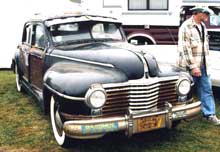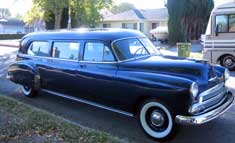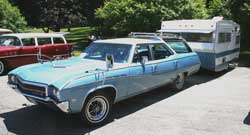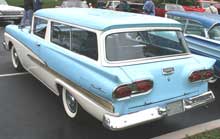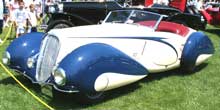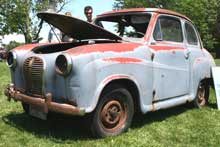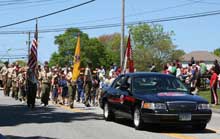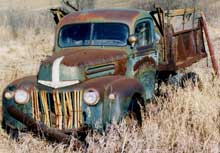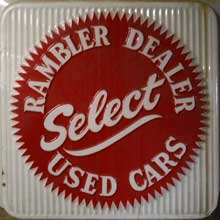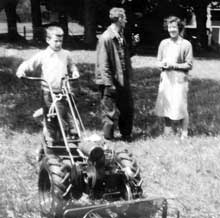About three years ago at Hershey I came across a sight that stopped me in my tracks. What to my wondering eyes appeared was the strangest 1942 Dodge I’d ever seen. A placard on the vehicle suggested it was a prototype for a Dodge-based Town & Country, and proffered a hefty asking price.
We all know the Town & Country variations. They’ve been explained here before but it’s fun to do it again. In 1941, Chrysler introduced a handsome barrel-back woodie, well received and carried over into 1942. After the war, the wagon was gone but succeeded by a handsome six-cylinder sedan and eight-pot convertible. There were plans for others, a two-door Brougham, one built, a hardtop (made in quantity of seven) and a little three-passenger roadster that was never built. In recent years, at least one was created from a Windsor business coupe. The T&C soldiered on until 1950, by which time it came only in hardtop form with very little wood showing. Soon the name was retired to Chrysler’s all-steel station wagon.
But a Dodge T&C? Dodge, with DeSoto, was the least of the woodies. Unlike Plymouth, which had a wagon in 1946-7-8, except for truck-based wagons Dodge had a dearth of wood between the 1938 Westchester Suburban and the 1949 Coronet station wagon.
So really I think this creation was somebody’s idea of what a Dodge Clown & Country might look like. I’ve always considered the 1942 Dodges to be pretty cars, nicely proportioned and tastefully trimmed, especially in contrast to their postwar brethren. This car, however, is pretty crude, its lines dictated by the sheet metal that was grafted on. I don’t recognize the trunk lid, except for the 1946-48 Chrysler stop lamp. The roof looks quite familiar, one of the many twin-window 1937-39 sedans, but I can’t place it. Moreover, it was in pretty terrible shape, with sheet metal grafted over obvious holes in the body and hints of ominous trouble within. By Saturday it was on a trailer, headed back whence it came.
Anybody got any other ideas, or answers to this puzzle? Tell us what you think.

